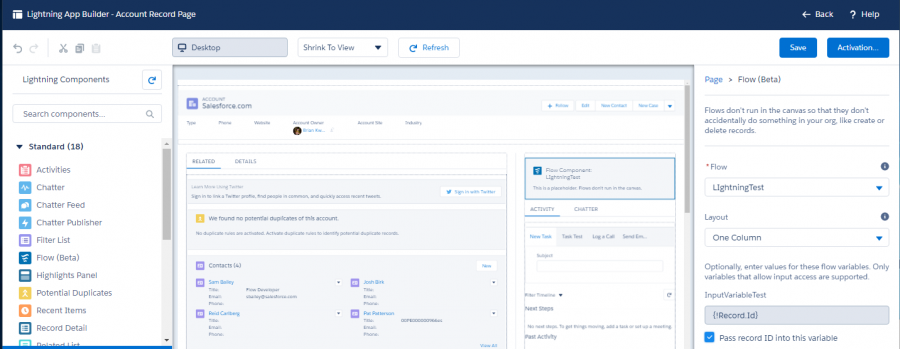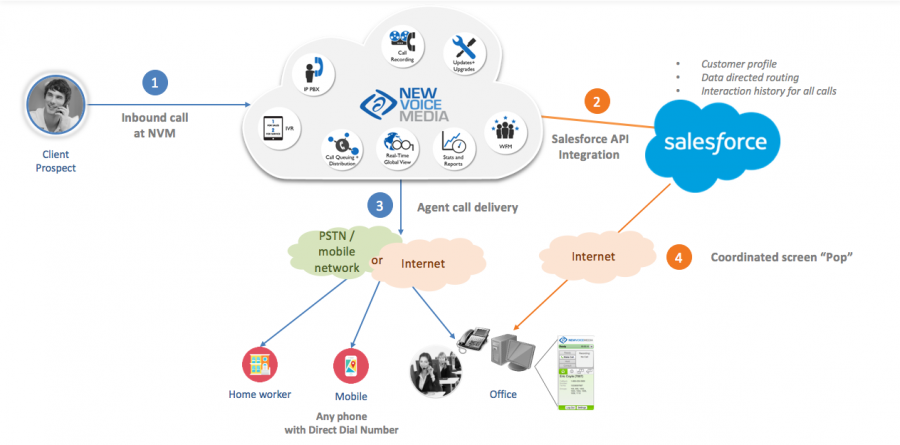Salesforce recently announced that it will be acquiring MuleSoft for $6.5 Billion. The deal which is expected to close in July 2019 is based upon using MuleSoft for powering Salesforce Integration Cloud.
The company that boasts of over 1200 customers including Coca Cola and Unilever etc, will now be powering the Salesforce Integration Cloud module with its platform, which enables enterprises to build and expand the application networks that connect data and devices, enterprise apps, on-premises and the cloud.
Let us look a little more into this new Salesforce Integration Cloud module that is most likely going to hit the business world next fiscal year.
About Salesforce Integration Cloud
Connecting the disparate data sources with systems for building consumer experiences continues to be the biggest challenge that businesses and enterprise level developers face.
The soon to be launched Salesforce Integration Cloud comes with a whole set of tools and services, which make it convenient for the enterprises to gather or retrieve their data, irrespective of where it is residing, and then deliver smart connected consumer experiences along all the touchpoints and channels.
The Integration Cloud which will soon be used by a number of enterprise app development companies to develop enterprise apps, is supposedly going to have three layers:
1- Integration Platform
Made on MuleSoft AnyPoint platform, the Integration Cloud Platform will be an application network that would connect data and devices, enterprise apps across the cloud or on-premises.
2- Integration Builder
Using the Integration builder, admins will be able to build a single customer view across their complete business system network and the Salesforce deployments.
Enterprises will be able to do all of that without writing even a single of code (everything will happen with clicks). Admins would be able to manage all the connections with the help of a common admin console.
3- Integration Experience
By directly bringing together all the Salesforce customer data in completely new ways, admins would be able to create personalized and truly seamless end-to-end customer experiences across different departments like service, sales, commerce, marketing, amongst others.
For example, an admin would also easily be able to use the Lightning App Builder for bringing in the ecommerce order history information into their Lightning service console, which would enable the service reps to convert the service interactions in upsell and cross-sell opportunities, and that too without leaving the admin console.
The Integration Cloud will also come with a platform service called Lightning Flow. Using the platform, businesses will be able to bring the advantages of process automation in their CRM.
About Lightning Flow

Today, most of the businesses handle the customer processes using a tool that is not connected to the consumer data, which leads to a lot of lost opportunity. With the help of the Lightning Flow Components, business and developers users would be able to build a process that has guided, visual tools that are integrated with their customer data and is embedded into every touchpoint. It would result in lowered wait times for the consumers customers and better productivity.
The lightning components would also enable integration of Einstein Analytics and Quip App in the Integration Cloud module itself.
Using the Einstein Analytics, businesses will get direct AI powered insights that would help them take smarter decision within the apps to take smart decisions in just a few clicks.
By enabling the integration of the Quip live app in the Integration Cloud, Salesforce has given the freedom to enterprises to easily navigate through deals, embed videos, and design visual content all inside a single Quip document.
Together, Salesforce and MuleSoft will enable customers to connect all of the information throughout their enterprise across all public and private clouds and data sources—radically enhancing innovation.
Now that we have brought you up to speed with the new platform that Salesforce is all set to launch by next year in partnership with MuleSoft, let us now go a little deeper in the need of incorporating cloud integration in the business process in the first place.
But before we get into the ways Cloud Integration benefits a business process, let us first look into what Cloud Integration Platform does.
What is a Cloud Integration Platform

A cloud integration platform is responsible for integrating the business’s on premise business resource to the cloud based resources. Cloud integration helps businesses bring their software, platform services, and infrastructure in one place, which results in better flexibility, speed, and improved cost advantage.
Let us now move on to the second part – Ground Level Business Benefits of Cloud Integration. Here they are:-
- Up to date Information
Since all the applications that are on cloud are in sync with each other, businesses always get information that are updated in real time on the cloud.
- Safety
Every employee is given a username and password which would be required to sign into the cloud, nobody without an authorized credential can view or work around in the cloud.
- Improved Functioning
By removing a series of manual jobs and moving towards automation, cloud integration frees up the business’s time to focus on other tasks than managing and updating information from different sources.
- Scalability
The fact that every business information is on the cloud and not on premises, it is easier for businesses to upgrade their operations, without worrying about space restrictions.
- Higher Availability of Resources
Cloud Integration gives businesses the advantage of high and easy availability of resources 24*7. Because only an internet connection is needed to access the cloud, the issue of on premise mobility never arises.
- Reduced Cost
The number one cost that enterprises face is the one that goes into management of the enterprise software, both in terms of manpower and the time that goes into software management. The tighter the cloud integration the lesser is the need of investing in talent in its management.
The Salesforce Integration Cloud is expected to bring in a number of business benefits both in terms of the daily work process and at the long term revenue generation capability.
While the real use cases would only be available when the platform hit the market, the present day expectation is definitely on the positive sentiment side.



